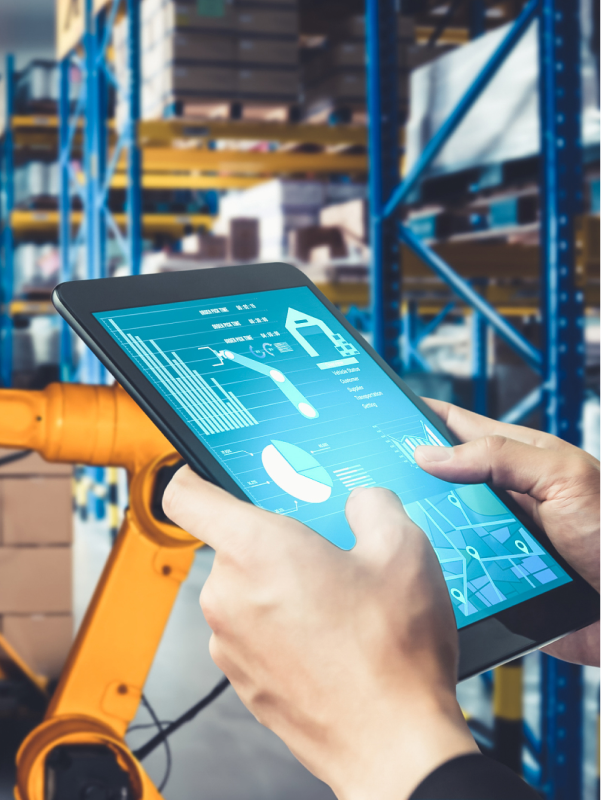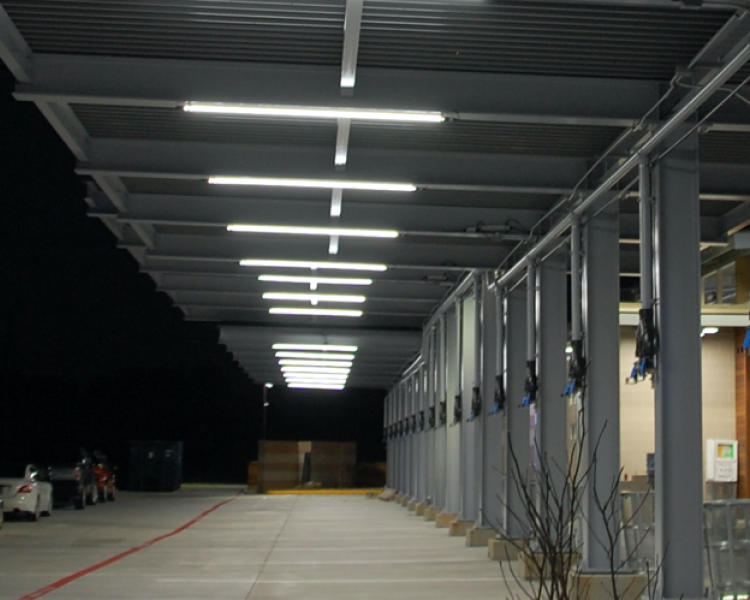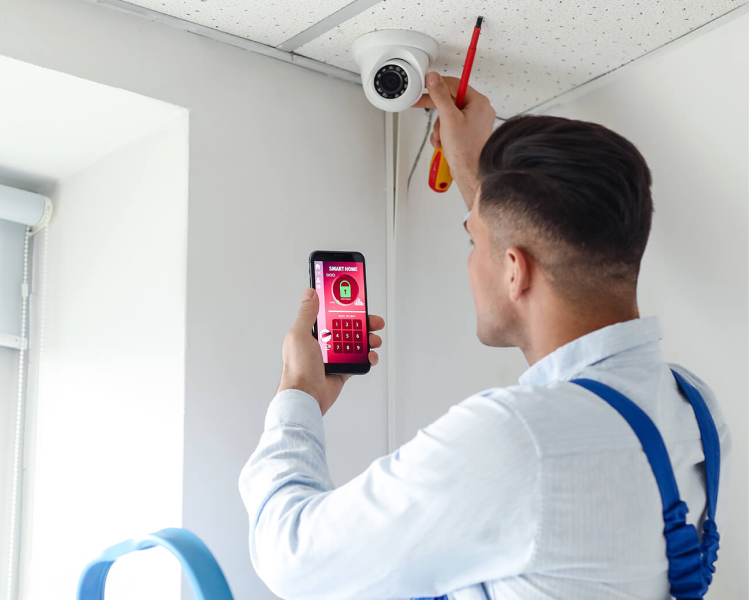Automating the transportation of merchandise into, through, and out of warehouses to customers with the least amount of human help is known as warehouse automation. A company can eliminate labor-intensive tasks like manual data entry, analysis, and repetitive physical labor as part of an automation project.
For instance, a worker at a warehouse might load bulky products onto an autonomous mobility robot. A robot moves inventory from one warehouse end to the shipping zone, and software tracks its progress to maintain up-to-date data. These robots increase this task's accuracy, dependability, speed, and efficiency.
However, warehouse automation mostly refers to using software to substitute human labor; it does not call for robotic or physical automation.
Since its inception, EVVR has been at the forefront of providing innovative solutions to its clients. From designing and improving ground-breaking products and services to installing them in your space for a better living and work experience, you can rely on EVVR without missing a beat!
- Digital Automation
- Physical Automation Of A Warehouse
- Mechanics of Warehouse Automation
- Grading Of Warehouse Automation
- Types of Warehouse Automation
- How To Automate Your Warehouse In 2023
- EVVR - Your Trusted Partner For Warehouse Automation
Digital Automation
Digital automation reduces manual procedures by using software and data. Digital automation in the warehouse is exemplified by Automatic Identification and Data Capture (AIDC) technology, similar to mobile barcoding.
In addition to lowering operational and legal risks, increasing security, improving safety, and facilitating integration with enterprise resource planning (ERP) systems, digital process automation also minimizes manual labor and eliminates human error in warehouse operations. AIDC technology can lower operational expenses related to human error and improve customer service, worker experience, and mobile barcode scanning. RFID and mobile barcode scanning are two examples of this technology.
Putting digital automation technology into practice costs a lot of money upfront. These expenses cover the time and materials needed to install the systems and train staff, as well as the hardware, software, and support contracts. Digital automation may also raise the possibility of cybersecurity risks and lost or corrupted data.
Physical Automation Of A Warehouse
Utilizing technology to reduce staff mobility and provide more effective workflows is known as physical automation. One example of how the warehouse operates is with robots.
Physical automation offers several benefits, such as better performance, increased scalability and reliability of services, and increased capacity and efficiency of warehouses. Its drawbacks include the system's high maintenance costs, lack of competent personnel to operate and maintain it, high upfront costs, and equipment designed for highly specialized tasks.
Careful planning and organization are essential for firms to benefit from automated warehouse systems. Large-volume warehouses and distribution facilities with room for specialist equipment are better suited for these systems.

Mechanics of Warehouse Automation
Robotics, sensor technology, and software are used in warehouse automation to automate processes. These items are compatible with pre-existing solutions, such as software for inventory management.
Automation of your warehouse helps guarantee that your facilities' business-critical functions satisfy client demand. The first step is implementing a warehouse management system (WMS), which helps with data analysis and automates manual tasks like data capture and inventory control. These systems can be integrated with other solutions to effectively manage and automate processes across various business and supply chain functions.
Grading Of Warehouse Automation
Automating a warehouse might be as easy as this or quite complicated. Planning, equipment, and vehicles are used in basic automation to minimize repeated operations. Advanced systems leverage robotics and artificial intelligence.
Basic Automation
Simple technology that helps individuals with chores that would otherwise require more manual effort is called this sort of automation. A conveyor or carousel, for instance, transports items from point A to point B.
System Automation
This system automates processes and tasks using robots, software, machine learning, and data analytics. To avoid having users repeatedly visit the warehouse, a warehouse management system, for instance, allows users to select similar items to satisfy all of the orders that need to be filled on a given day.
Mechanized Automation
Robotic systems and equipment are used in this type of warehouse automation to help people with jobs and procedures in the warehouse. One example is the autonomous mobile shelf loader robots that lift product racks and hand them off to human pickers so they may be retrieved and sorted.
Advanced Automation
Mechanized warehouse robotics and automation technologies are combined in advanced warehouse automation to replace labor-intensive human activities. Consider a fleet of robotic forklifts that can navigate a warehouse and transmit each forklift's location to an internet tracking gateway, using sophisticated AI, cameras, and sensors.

Types of Warehouse Automation
Because there is a large variety of warehouse technology and systems available, there are numerous forms of warehouse automation. Automation of the warehouse seeks to reduce human labor and expedite all operations, from receiving to shipping.
Goods-To-Person (GTP)
Goods-to-person fulfillment is one of the most widely used strategies for boosting productivity and decreasing traffic. Conveyors, carousels, and vertical lift systems fall under this category. GTP systems can potentially treble or double warehouse picking speed when used correctly.
Automated Storage and Retrieval Systems (AS/RS)
A type of GTP fulfillment technology called AS/RS consists of automated devices and systems for storing and retrieving goods and materials, including mini-loaders, tote shuttles, and material-carrying vehicles AS/RS systems are typically used in high-volume, space-constrained warehouse applications.
Automatic Guided Vehicles (AGVs)
There needs to be more processing power on board for this kind of automated automation. These vehicles follow a predetermined route across the warehouse using sensors, cables, or magnetic strips. Large, straightforward warehouse facilities with this navigation pattern are the only ones suitable for using AGVs. Automating large, complex warehouses with high human traffic and limited space is unsuitable for AGVs.
Autonomous Mobile Robots (AMRs)
AMRs, more adaptable than AGVs, employ GPS systems to plan efficient paths across a particular warehouse. Advanced laser guidance systems are utilized by AMRs to identify impediments, enabling safe navigation through dynamic situations with high human traffic. They may be swiftly implemented and are simple to program using routes.
Pick-to-Light and Put-to-Light Systems
These systems instruct warehouse pickers where to store or retrieve certain items using mobile barcode scanning devices synchronized with digital LED displays. At high volume circumstances, they can significantly reduce the amount of time spent walking, searching, and human mistakes. EVVR Center Lite can integrate with your smart lighting system and create various automation for your smart warehouse.
Voice Picking and Tasking
Pick-by-voice or voice-directed warehouse procedures use mobile headsets and speech recognition software. The system generates optimal pick pathways for warehouse personnel that specify where products should be picked and stored. This approach improves safety and efficiency for pickers by doing away with the need for portable electronics like RF scanners, allowing them to focus on their work.
How To Automate Your Warehouse In 2023
To automate a warehouse, a project plan is necessary. A risk assessment must be finished, stakeholders must be included, objectives and deliverables must be specified, and a project schedule must be made.
First, choose a project manager or managers and assemble a support team. They will create a timeline, a calendar of deliverables, and a project schedule. After that, create implementation support plans based on input from management at all levels, including corporate leadership and warehouse managers across the board. Lastly, decide which warehouse automation best suits your company's objectives, client demand, team input, time constraints, and resource availability.
Devise A Committee
Establish a committee of internal stakeholders with knowledge of the capabilities, difficulties, and performance of the warehouse today and an awareness of the gaps in technology. Think about bringing in outside specialists with knowledge of supply chain automation and familiarity with your sector and warehouse operations.
Collect & Process Critical Data
Data regarding your current supply chain and business-critical warehouse operations are necessary for successful warehouse automation. Consider evaluating your current infrastructure and data collection method before introducing new automation technology. It would help if you designated knowledgeable IT stakeholders as the owners of the data migration project.
Test Your Inventory Controls
The main component of warehouse operations is inventory control. Standard operating procedures (SOPs) for inventory control should be established or improved before a warehouse automation system is implemented. Provide SOPs for inventory loss, customer satisfaction, shipping, receiving, and purchasing. Identify and establish the key performance indicators (KPIs) that will be used to gauge how well-automated inventory control systems and procedures are working.
Implement A WMS
Software modules on WMS platforms assist with inventory management and control, oversee warehouse operations, lower labor expenses related to manual work, and enhance customer service. A contemporary WMS needs to be compatible with your current company applications and support mobile devices.
Decide The Type of Automation
Is your objective to employ automation to minimize labor expenses related to back-office accounting and warehouse operations and to expedite human data entry? Or you're thinking about adding more sites or growing your warehouse footprint and believe it's time to deploy advanced physical process automation like robots and GTP systems. It is crucial to ascertain the kind of warehouse automation corresponding to objectives and client requirements.
EVVR - Your Trusted Partner For Warehouse Automation
Whether you are testing the automation route for your warehouse or going all in, EVVR will be your trusted partner to improve the functions and reliability of the infrastructure. For instance, the EVVR In-Wall Relay Switch is a no-brainer for automative lighting. In contrast, the EVVR Energy Monitoring Smart Plug provides insights into appliance energy consumption, allowing you to optimize your usage. EVVR Center Lite can work as the brains of the operation to control and coordinate among different appliances across the network. So, all the ideal solutions under one roof!
















